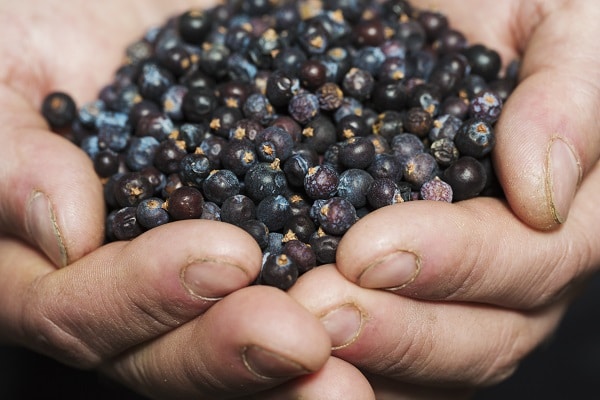If you are a person who spends time in the outdoors, the chances are that at some point during your adventures, you will have to identify a berry. It is not always an easy task because there are many different kinds of berries out there, and it can be difficult to tell which ones are poisonous from those that aren’t. There are various methods for telling whether or not a berry is poisonous. Some of them include smell, taste, touch, and sight. This article will take a look a some of the common toxic berries in North America and give you some different ways to identify them.
Contents
American Bittersweet

The American Bittersweet is a poisonous berry that is found throughout North America. Its orange skin and sweetness easily identify this berry, but slightly bitter taste. If you eat this berry, you will experience nausea, vomiting, and diarrhea. In extreme cases, this berry can also cause seizures and heart problems. You can avoid this berry by avoiding fruits with large terminal clusters that only appear on the end of each branch. This plant also has leaves with an alternating pattern and is smooth to the touch. The leaves are also much narrower than long and are usually long-acuminate, which means a leaf is narrowing to a slender point.
Holly Berries

Poisonous berries in the United States come in all shapes and sizes. The most recognizable of these is the holly berries. These red and green berries grow on a small evergreen tree, typically found in the southern and eastern United States. The holly tree leaves are also poisonous, so it is essential to be aware of both the tree and the berries if you are traveling in an area where they grow. Holly berries can be identified by their distinctive color and their smooth skin. They are typically about 1/2 inch in diameter. Other aspects you can use to identify these berries are that the leaves have spiny edges, and their blossoms are white and have a four-lobed shape.
Lily Of The Valley

Lily of the Valley is a poisonous flower that’s located in North America. This flower has white petals and a small green stem. It typically grows in shaded areas, such as under trees. Lily of the Valley can be identified by its sweet smell, similar to anise. If you ingest this flower or the small berries it produces, you will experience nausea, vomiting, and diarrhea. Lily of the valley contains about 38 different cardiac glycosides, some of which can cause cardiac arrest and, in extreme cases, death.
Juniper Berries

These small, dark purple berries are found on Juniper trees. They have a bitter taste and contain a poisonous oil called terpenes. Symptoms of juniper berry poisoning include stomach pain, vomiting, and diarrhea. Juniper berries can be identified by their dark purple color and the tiny bumps on their surface. They are typically about 1/4 inch in diameter. You can also identify these berries by their leaves, which are needle-like and grow in pairs. The juniper trees themselves can be identified by their light green needles and twisted branches.
Cotoneaster Berries

The Cotoneaster Berry is a poisonous berry that is found in Europe and Asia. However, it has been seen growing in some regions of North America as well. This berry is red or black and has a sweet but acidic taste. If you eat this berry, you will experience nausea, vomiting, and diarrhea. You can identify this berry by its red or black color, as well as the small size, about 1/4 inch in diameter. Cotoneaster berries also have a smooth surface and are typically found on a shrub with red or green leaves. These shrubs will generally have a thorny stem and small white flowers.
Yew Berries

The Yew Berry is a poisonous berry that is found in North America and Europe. These berries contain a toxic compound called taxine, which can cause vomiting, diarrhea, and even death. These berries can be identified by their red or orange color, as well as their bumpy surface. They are typically about 1/2 inch in diameter. The leaves of this plant have a sharp outline and are a dark green color. The yew tree generally is very tall, with needles that are a deep green color.
Conclusion
Many poisonous berries can be found in North America. If you are unsure whether or not a berry is safe to eat, it is best to avoid it. Some of the most common symptoms of berry poisoning include nausea, vomiting, and diarrhea. In extreme cases, this can lead to death. If you spend a lot of time in the woods, it is a good idea to read more about any berries that may be local to your area. This way, you can know with certainty which ones to avoid. If you experience any of the symptoms listed above after eating a berry, you should seek medical attention immediately.


